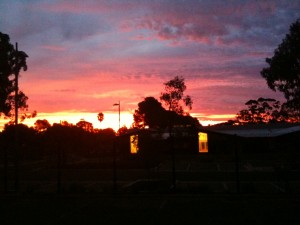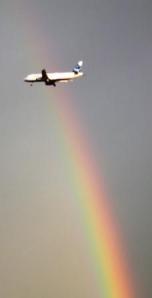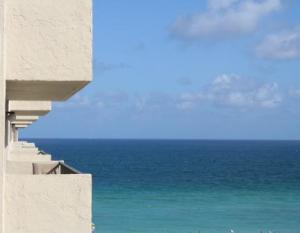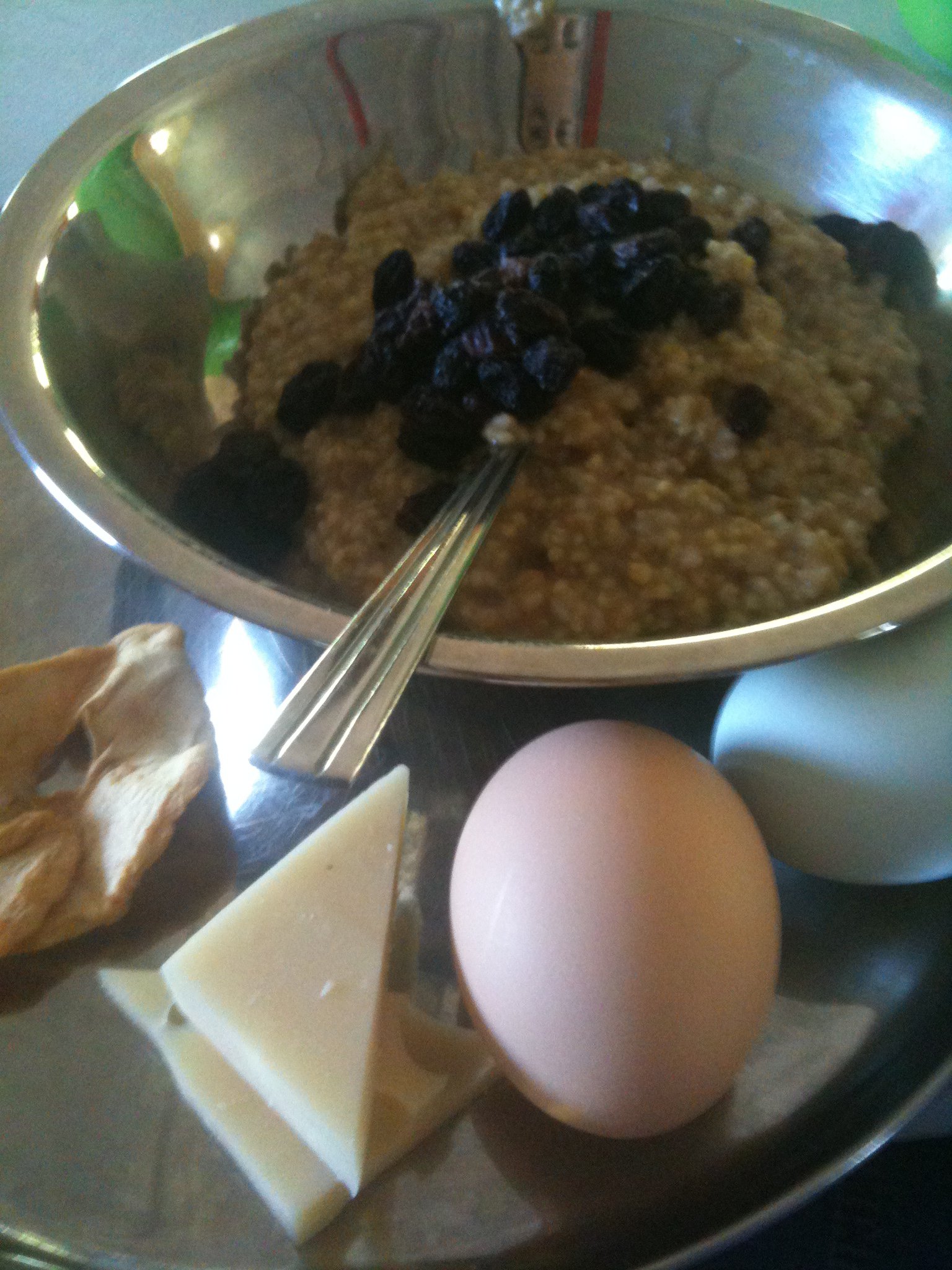
Easter Island, Chile. I made a bracha upon seeing this rainbow.
According to the Torah the rainbow came into being after the flood of Noah. G-d showed Noah a rainbow and said, ‘In the future if I am upset at the world I will show a rainbow.’ It was a sign of the covenant G-d made with Noah that he would not destroy the world with a flood again. Thus, seeing a rainbow is not a good thing even though we make a blessing (bracha) on seeing it. Because it is not a good thing, one should not point the rainbow out a friend if they do see it.
I have a few questions on this:
1. There is probably a naturally occurring rainbow every second somewhere in the world and If not every second than at least every hour or day. Does this mean that G-d constantly wants to destroy the world?
2. Why does G-d show he’s upset with a rainbow - which is a beautiful thing to look at after all - why not make an ugly dark cloud in the sky or something similar? Seeing a rainbow is hardly a motivator to repent. Almost anyone is happy to see rainbow because it is pretty to look at.
3. One is not supposed to point out a rainbow to a friend even when this means that his friend will be able to make the special blessing when seeing a rainbow. What I want to understand: If the rainbow is to show us G-d being upset with us and serve as reminder to repent then why should we not point out the rainbow to friends?
My answer to these questions is just a thought and I have no Torah quote to base it on.
Firstly, if there is a rainbow always showing somewhere in the world it is illogical to say that G-d is always mad and wants to destroy the world. Secondly, G-d rules with purpose and meaning. Nothing is random.
The world was created for us man and thus everything in it needs to reflect onto us. G-d does not need to vent His anger here in the physical world. He can probably do it somewhere else. If He is venting, i.e., showing us the rainbow, than He obviously wants us to see it. Why? So we will repent. Now if seeing the rainbow will lead us to repentance than we return to one of the initial questions: why should we not point it out to friend who is near us so they can see it too and also repent?
Here is my possible answer:
Man is considered an ‘olam katan,’ a ‘small world.’ Granted that the first time when G-d showed Noah the rainbow he was saying that he would never again destroy the world with a flood. Perhaps G-d is showing that he upset and wants to destroy a ‘small world.’ Thus the individual seeing the rainbow needs to see it as a sign for himself that G-d is upset with him and he needs to repent. It is not for him to point out to a friend suggesting that his friend needs to repent.
Why the beautiful rainbow? Because, this shows G-d’s beauty that even when He is angry and upset He shows his love by making it beautiful. The individual who sees the rainbow knows that G-d is upset at him yet still loves him very much and thus in a nice way is showing that He is upset.
Further, a rainbow comes after it rains and rain is an act of kindness from G-d. We need the rain to make food grow. No rain, no food. So G-d sends us rain with the rainbow which are in direct contradiction to each other in meaning, to show that He loves us even at a time when He wants to say, ‘I want to destroy you.’ Thus, we can have thousands of rainbows occurring all over the world at the same time when they are for specific individuals to see.
Read More










